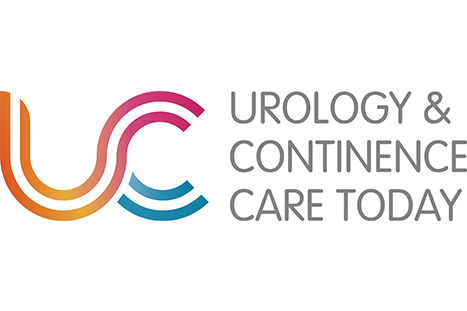References
Barry J, Hardiker N (2012) Advancing nursing practice through social media: a global perspective. Online J Issues Nurs 17(3): 5
Cisco J (2018) Using Academic Skill Set Interventions to Reduce Impostor Phenomenon Feelings in Postgraduate Students. J Further Higher Educ 44(3): 423–37
Data Protection Act (2018) Available online: www.gov.uk/data-protection
De Klerk S, Verreynne M (2017) The networking practices of women managers in an emerging economy setting: negotiating institutional and social barriers. Hum Resource Management J 27(3): 477–501
Donelan H (2014) Social media for professional development and networking opportunities in academia. J Further Higher Education 40(5): 706–29
Ferguson C (2013) It’s time for the nursing profession to leverage social media. J Adv Nurs 69(4): 745–7
Fraser R (2011) The Nurse’s Social Media Advantage: How Making Connection and Sharing Ideas can Enhance Your Nursing Practice. Indianapolis: Sigma Theta Tau International. Available online: https://www.researchgate.net/publication/265046177_The_Nurses'_Social_Media_Advantage_How_making_connections_and_sharing_ideas_can_enhance_your_nursing_practice
Green J, Wyllie A, Jackson D (2014) Social networking for nurse education: possibilities, perils and pitfalls. Contemp Nurse 47(1–2): 180–9
Kahnum S, De Lourdes de Souza M, Naz N, Teresinha Macron Dal Sasso G, et al (2016) The use of networking in nursing practice — an integrative review. Societies 6(3): 22
Meiring A (2018) The value of networking for professional nurses. Prof Nurs Today 22(3): 2
Nursing and Midwifery Council (2018) The Code: Professional Standards of Practice and Behaviour for Nurses, Midwives and Nursing Associates. NMC, London. Available online: www.nmc.org.uk/globalassets/sitedocuments/nmc-publications/nmc-code.pdf
Power A (2015) Twitter’s potential to enhance professional networking. BMJ 23(1): 65–7
Sandlin J, Hinmon D (2016) Beyond baby steps: today’s use of social networking sites and the nursing profession. J Perinat Neonat Nurs 30(3): 204–8
Slank S (2019) Rethinking the imposter phenomenon. Ethical Theory & Moral Practice 22(1): 205–18
Tower M, Latimer S, Hewitt J (2014) Social networking as a learning tool: nursing students perception of efficacy. Nurse Educ Today 34(6): 1012–17
Cisco J (2018) Using Academic Skill Set Interventions to Reduce Impostor Phenomenon Feelings in Postgraduate Students. J Further Higher Educ 44(3): 423–37
Data Protection Act (2018) Available online: www.gov.uk/data-protection
De Klerk S, Verreynne M (2017) The networking practices of women managers in an emerging economy setting: negotiating institutional and social barriers. Hum Resource Management J 27(3): 477–501
Donelan H (2014) Social media for professional development and networking opportunities in academia. J Further Higher Education 40(5): 706–29
Ferguson C (2013) It’s time for the nursing profession to leverage social media. J Adv Nurs 69(4): 745–7
Fraser R (2011) The Nurse’s Social Media Advantage: How Making Connection and Sharing Ideas can Enhance Your Nursing Practice. Indianapolis: Sigma Theta Tau International. Available online: https://www.researchgate.net/publication/265046177_The_Nurses'_Social_Media_Advantage_How_making_connections_and_sharing_ideas_can_enhance_your_nursing_practice
Green J, Wyllie A, Jackson D (2014) Social networking for nurse education: possibilities, perils and pitfalls. Contemp Nurse 47(1–2): 180–9
Kahnum S, De Lourdes de Souza M, Naz N, Teresinha Macron Dal Sasso G, et al (2016) The use of networking in nursing practice — an integrative review. Societies 6(3): 22
Meiring A (2018) The value of networking for professional nurses. Prof Nurs Today 22(3): 2
Nursing and Midwifery Council (2018) The Code: Professional Standards of Practice and Behaviour for Nurses, Midwives and Nursing Associates. NMC, London. Available online: www.nmc.org.uk/globalassets/sitedocuments/nmc-publications/nmc-code.pdf
Power A (2015) Twitter’s potential to enhance professional networking. BMJ 23(1): 65–7
Sandlin J, Hinmon D (2016) Beyond baby steps: today’s use of social networking sites and the nursing profession. J Perinat Neonat Nurs 30(3): 204–8
Slank S (2019) Rethinking the imposter phenomenon. Ethical Theory & Moral Practice 22(1): 205–18
Tower M, Latimer S, Hewitt J (2014) Social networking as a learning tool: nursing students perception of efficacy. Nurse Educ Today 34(6): 1012–17
This piece was first published in the Journal of General Practice Nursing. To cite this article use: Thrumble H, Gunowa NO (2022) Using social media to enhance nursing practice and patient safety. J Gen Pract Nurs 8(4): 20–21


